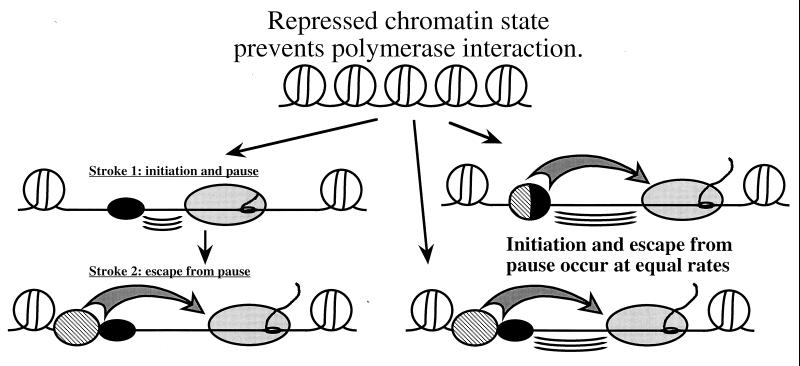FIG. 9.
Model for a two-stroke mechanism where distinct domains or proteins control initiation and promoter-proximal pausing. Promoter-proximal pausing could result from a two-stroke mechanism shown on the left side of the diagram. In the first stroke, a regulator (small black oval) would cause polymerase (light gray oval) to initiate and advance to the paused state. The three curved lines between the regulator and polymerase represent this step. GAGA factor might exemplify such a regulator. In the second stroke, regulators (striped oval) mediate the escape of the polymerase. This is represented by the large arrow. HSF could exemplify this form of regulator. The right side of the diagram shows possible scenarios where the initiation and escape of paused polymerase might occur at equal rates. The functions of initiation and escape could be built into a single protein or be associated with distinct proteins. Detection of pausing would depend on the relative rates of initiation and escape. Promoter-proximal pausing occurs when the rate of initiation is faster than the rate of escape. The hsp70 promoter could represent an extreme case in which the factor required for escape (HSF) is not present until after heat shock. In the case of Gal4p, we propose that initiation and escape from the pause occur at equal rates.

